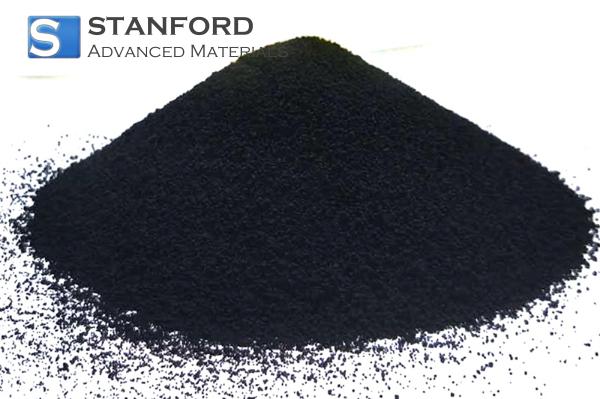Birefringence: Unveiling The Optical Properties Of Crystals
Understanding Birefringence
What is Birefringence?
Birefringence, also known as double refraction, is an optical phenomenon in which a material splits a light wave into two distinct rays. These rays, referred to as the ordinary and the extraordinary rays, travel at different speeds and are polarised at right angles. This property is inherent to certain anisotropic materials, that is, materials whose optical properties vary with direction.
Occurrence of Birefringence in Materials
Birefringence arises from the internal structure of materials. In isotropic materials, light propagates uniformly in all directions, resulting in a single refracted ray. In anisotropic materials, for example crystals, the molecular arrangement causes light to refract differently according to its polarisation and the internal axes of the material. Consequently, the light divides into two rays, each following its own path through the material.
Applications of Birefringence in Microscopy
Improved Material Analysis Using Polarised Light
In microscopy, birefringence serves as an instrument for analysing the optical properties of materials. Microscopes that utilise polarised light employ polarisation filters to examine the birefringent characteristics of samples. By observing the interference patterns and colour variations induced by birefringence, researchers can identify stress patterns, molecular alignments and differences in material composition.
Identification of Crystal Structures
Birefringence is particularly useful in detecting and examining crystal structures. Various crystals exhibit unique birefringent properties due to their symmetry and molecular arrangement. By analysing the birefringence patterns under polarised light, researchers can determine the type of crystal, assess its quality and examine any flaws or inclusions in the crystal lattice.
Common Birefringent Materials
Birefringence is observed in a diverse range of natural and synthetic materials. Understanding which materials exhibit this property is essential for applications in optics, materials science and engineering.
|
Material Type |
Examples |
Birefringent Properties |
|
Natural Crystals |
Calcite, Quartz, Tourmaline |
Exhibits high birefringence. |
|
Synthetic Crystals |
Sapphire, Lithium Niobate |
Controlled birefringence for optical devices. |
|
Polymers |
Polycarbonate, Nylon |
Moderate birefringence utilised for stress analysis. |
|
Biological Tissues |
Collagen, Muscle fibres |
Birefringence indicates structural organisation. |
Techniques for Measuring Birefringence
Accurate measurement of birefringence is critical for research and industrial applications. Various techniques are employed to quantify this optical property.
Polarising Microscopes
Polarising microscopes are the most commonly used instruments for measuring birefringence. By utilising polarised light and rotating the sample or the instrument, slight variations in light intensity and colour are observed. These observations allow determination of the magnitude and direction of the material's birefringence.
Interferometric Methods
Interferometric methods, such as Michelson or Mach-Zehnder interferometers, enable precise measurements of birefringence by analysing the interference patterns generated by the split light beams. Consequently, these methods are highly sensitive and can detect minor differences in refractive indices, thereby facilitating detailed material characterisation.
Frequently Asked Questions
What causes birefringence in crystals?
Birefringence in crystals is caused by their anisotropic molecular structure, which results in the splitting of light into two rays with differing refractive indices.
How is birefringence measured in materials?
Birefringence is typically measured using polarising microscopes or interferometric methods, whereby the separation and phase difference of light beams passing through a material are analysed.
Can all crystals exhibit birefringence?
No, only anisotropic crystals with a non-uniform molecular structure exhibit birefringence. Isotropic crystals do not display this property.
What are some common applications for birefringent materials?
Birefringent materials are employed in optical devices such as waveplates, polarisers and in the stress analysis of technical materials.
How does birefringence affect microscopic analysis?
Birefringence enhances microscopic analysis by rendering internal stresses, molecular orientations and crystal structures visible through the interaction of polarised light with the sample.

 Bars
Bars
 Beads & Spheres
Beads & Spheres
 Bolts & Nuts
Bolts & Nuts
 Crucibles
Crucibles
 Discs
Discs
 Fibers & Fabrics
Fibers & Fabrics
 Films
Films
 Flake
Flake
 Foams
Foams
 Foil
Foil
 Granules
Granules
 Honeycombs
Honeycombs
 Ink
Ink
 Laminate
Laminate
 Lumps
Lumps
 Meshes
Meshes
 Metallised Film
Metallised Film
 Plate
Plate
 Powders
Powders
 Rod
Rod
 Sheets
Sheets
 Single Crystals
Single Crystals
 Sputtering Target
Sputtering Target
 Tubes
Tubes
 Washer
Washer
 Wires
Wires
 Converters & Calculators
Converters & Calculators
 Write for Us
Write for Us





 Chin Trento
Chin Trento



